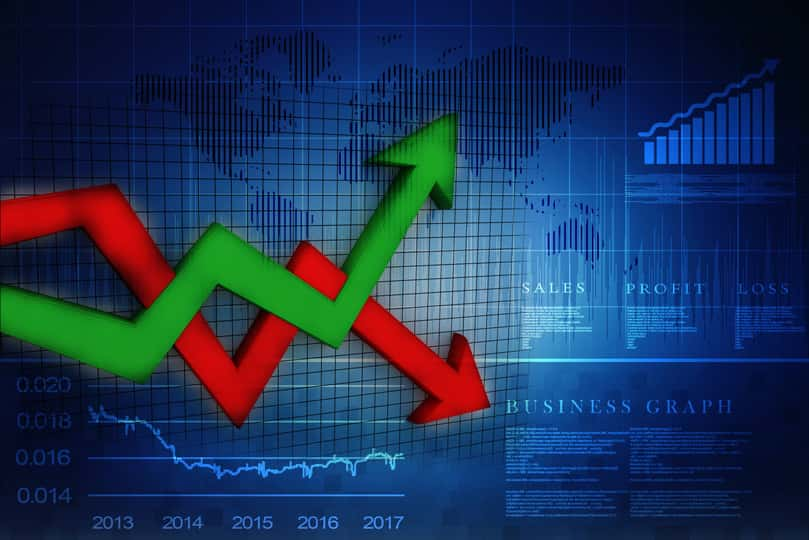CVS Health Corporation (CVS - Get Rating) provides health services in the United States. It operates through three segments: Pharmacy Services; Retail/LTC; and Health Care Benefits. The company operates approximately 9,900 retail locations and 1,100 MinuteClinic locations. On the other hand, Rite Aid Corporation (RAD - Get Rating) operates a chain of retail drugstores. It operates through two segments, Retail Pharmacy; and Pharmacy Services. The company operates approximately 2,500 retail pharmacy locations in 17 states.
With the resurgence of COVID-19 cases and rising concerns over the highly transmissible omicron coronavirus variant, the drugstore industry is expected to witness high demand. Also, the industry is usually a steady performer, given an almost inelastic demand for drugs. According to a report by Research and Markets, the global pharmaceuticals market is expected to grow at a CAGR of 8% from 2021 to 2025. Therefore, both CVS and RAD should benefit.
CVS has gained 18% over the past three months, while RAD has negative returns. Also, CVS’ 36% gains over the past nine months are significantly higher than RAD’s negative returns. Moreover, CVS is the clear winner with 44.7% gains versus RAD’s negative returns in terms of year-to-date performance.
But which of these two stocks is a better buy now? Let’s find out.
Latest Developments
On December 2, 2021, CVS and Microsoft Corp. (MSFT) announced a new strategic alliance focused on developing innovative solutions to help consumers improve their health. Roshan Navagamuwa, CVS’ Chief Information Officer, said, “Business services at this scale require a new level of partnership. Our collaboration with Microsoft will accelerate this work and empower our employees to provide quality care that is more personal and affordable.”
On September 24, 2021, RAD announced the expansion of its partnership with Uber Technologies, Inc. (UBER) to offer delivery of Rite Aid products nationwide through Uber Eats. This partnership will allow customers to conveniently order and receive essential healthcare and grocery items directly to their homes.
Recent Financial Results
CVS’ total revenue increased 10% year-over-year to $73.79 billion for the fiscal third quarter ended September 30, 2021. The company’s adjusted operating income grew 12.5% year-over-year to $4.07 billion, while its net income came in at $1.59 billion representing a 30.2% year-over-year increase. Also, its adjusted EPS came in at $1.97, up 18.7% year-over-year.
RAD’s revenues increased 2.2% year-over-year to $6.11 billion for the fiscal second quarter ended August 28, 2021. However, its adjusted EBITDA declined 29.9% year-over-year to $106.20 million, while its adjusted net loss came in at $22 million representing a 63% year-over-year increase. Also, the company’s adjusted loss per share came in at $0.41, up 64% year-over-year.
Past and Expected Financial Performance
CVS’ revenue and total assets grew at CAGRs of 14.7% and 21.3%, respectively, over the past three years. Analysts expect CVS’ revenue to increase 7.5% in the current year and 4.5% next year. The company’s EPS is expected to grow 6.4% in the current year and 3.1% next year. Moreover, its EPS is expected to grow at 7.8% per annum over the next five years.
On the other hand, RAD’s revenue and total assets grew at CAGRs of 4.1% and 4.7%, respectively, over the past three years. The company’s revenue is expected to increase 4% in the current year and 2% next year. However, its EPS is expected to decline 166.7% in the current year and 112.5% next year. Also, RAD’s EPS is expected to decrease at 3.7% per annum over the next five years.
Profitability
CVS’ trailing-12-month revenue of $283.98 billion is significantly higher than RAD’s $24.31 billion. CVS is also more profitable with an EBITDA margin and levered FCF margin of 6.28% and 5.18% compared to RAD’s 1.73% and 1.96%, respectively
Furthermore, CVS’ ROA and ROTC of 3.55% and 5.36% are higher than RAD’s 0.72% and 0.96%, respectively.
Valuation
In terms of forward EV/EBITDA, RAD is currently trading at 14.78x, 42.5% higher than CVS’ 10.37x. However, CVS’ forward EV/S ratio of 0.68x is 142.9% higher than RAD’s 0.28x.
POWR Ratings
CVS has an overall rating of A, which equates to a Strong Buy in our proprietary POWR Ratings system. On the other hand, RAD has an overall rating of C, which translates to Neutral. The POWR Ratings are calculated considering 118 different factors, with each factor weighted to an optimal degree.
CVS has an A grade for Growth, consistent with analysts’ expectations that its EPS will increase in the upcoming quarters. On the other hand, RAD has a C grade for Growth, in sync with analysts’ expectations that its EPS will decline in the near term.
Also, CVS has a B grade for Value, consistent with its forward EV/EBITDA of 10.37x, 35.5% lower than the industry average of 16.07x. However, RAD has a C grade for Value, in sync with its forward EV/EBITDA of 14.78x, 21.2% higher than the industry average of 12.19x.
Moreover, CVS has a B grade for Stability, in sync with its beta of 0.81. In comparison, RAD has a C grade for Stability, consistent with its beta of 1.05.
Of the four stocks in the A-rated Medical – Drug Stores industry, CVS is ranked first. In comparison, RAD is ranked last.
Beyond what I’ve stated above, we have also rated the stocks for Momentum, Quality, and Sentiment. Click here to view all the CVS ratings. Also, get all the RAD ratings here.
The Winner
The drugstore chain industry is expected to grow with significant government investment across the globe to improve the overall healthcare sector. While both CVS and RAD are expected to gain, it is better to bet on CVS now because of its higher profitability and better growth prospects.
Our research shows that odds of success increase when one invests in stocks with an Overall Rating of Strong Buy or Buy. View all the other top-rated stocks in the Medical – Drug Stores industry here.
Want More Great Investing Ideas?
CVS shares were trading at $99.14 per share on Monday afternoon, up $0.28 (+0.28%). Year-to-date, CVS has gained 48.83%, versus a 26.53% rise in the benchmark S&P 500 index during the same period.
About the Author: Nimesh Jaiswal

Nimesh Jaiswal's fervent interest in analyzing and interpreting financial data led him to a career as a financial analyst and journalist. The importance of financial statements in driving a stock’s price is the key approach that he follows while advising investors in his articles. More...
More Resources for the Stocks in this Article
| Ticker | POWR Rating | Industry Rank | Rank in Industry |
| CVS | Get Rating | Get Rating | Get Rating |
| RAD | Get Rating | Get Rating | Get Rating |






